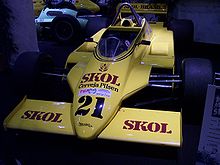
Williams Grand Prix Engineering Limited, currently racing in Formula One as Williams Racing, is a British Formula One team and constructor. It was founded by Sir Frank Williams (1942–2021) and Sir Patrick Head. The team was formed in 1977 after Frank Williams's earlier unsuccessful F1 operation: Frank Williams Racing Cars. The team is based in Grove, Oxfordshire, on a 60-acre (24 ha) site.
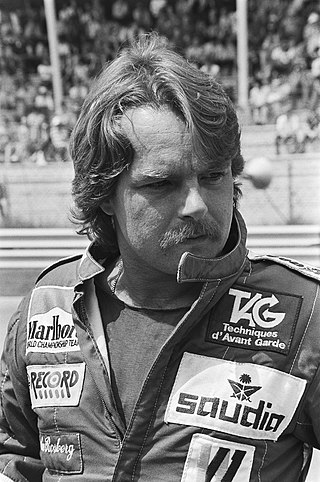
Keijo Erik Rosberg, best known as "Keke", is a Finnish former racing driver and winner of the 1982 Formula One World Championship. He was the first Finnish driver to win the championship. He is the father of Nico Rosberg, the 2016 Formula One World Champion.

Emerson Fittipaldi is a Brazilian former automobile racing driver who won both the Formula One World Championship and the Indianapolis 500 twice each and the CART championship once.

The Brazilian Grand Prix, currently held under the name São Paulo Grand Prix, is a Formula One championship race which is currently held at the Autódromo José Carlos Pace in Interlagos neighborhood, Cidade Dutra, São Paulo.
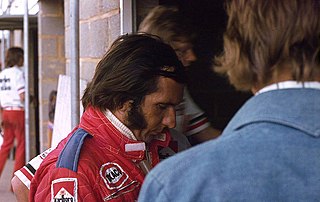
The 1974 Formula One season was the 28th season of FIA Formula One motor racing. It featured the 1974 World Championship of F1 Drivers and the 1974 International Cup for F1 Manufacturers, contested concurrently over a fifteen-race series which commenced on 13 January and ended on 6 October. The season also included three non-championship races.
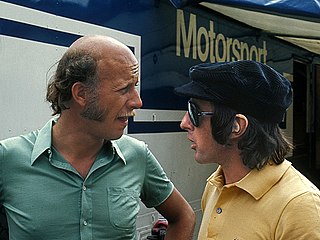
The 1973 Formula One season was the 27th season of FIA Formula One motor racing. It featured the 1973 World Championship of Drivers and the 1973 International Cup for F1 Manufacturers, which were contested concurrently over a fifteen-race series that commenced on 28 January and ended on 7 October. The season also included two non-championship races which were open to both Formula One and Formula 5000 cars.

The 1972 Formula One season was the 26th season of the FIA's Formula One motor racing. It featured the 23rd World Championship of Drivers, the 15th International Cup for F1 Manufacturers and numerous non-championship Formula One races. The World Championship season commenced on 23 January and ended on 8 October after twelve races.
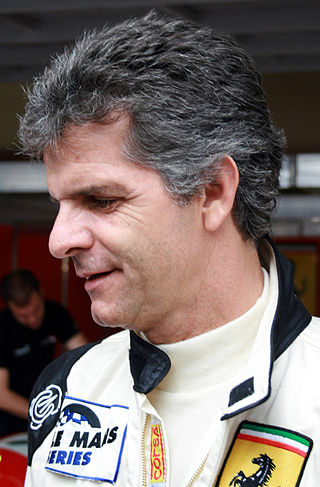
Francisco Adolpho "Chico" Serra is a Brazilian racing driver.
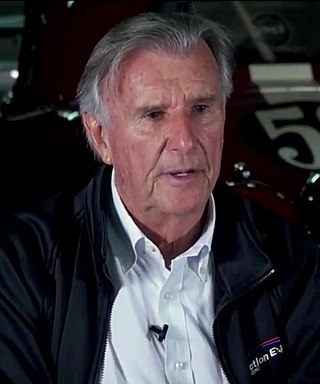
Wilson Fittipaldi Júnior was a Brazilian racing driver and Formula One team owner. He participated in 38 World Championship Formula One Grands Prix, debuting on 1 May 1972, scoring a total of three championship points. He ran the Fittipaldi Formula One team between 1974 and 1982. He also participated in numerous non-Championship Formula One races.

The Autódromo Internacional Nelson Piquet, also known as Jacarepaguá after the neighbourhood in which it was located, and also as the Autódromo Riocentro, was a motorsport circuit in Rio de Janeiro, Brazil. Opened in January 1978, a few weeks before 1978 Brazilian Grand Prix, it hosted the Formula One Brazilian Grand Prix on ten occasions, and was also used for CART, motorcycle racing and stock car racing. In 2012, it was demolished to make way for facilities to be used at the 2016 Summer Olympics.
Mário Haberfeld is a Brazilian auto racing driver.

The McLaren M23 was a Formula One racing car designed by Gordon Coppuck, with input from John Barnard, and built by the McLaren team. It was a development of the McLaren M16 Indianapolis 500 car. A Ford Cosworth DFV engine was used, which was prepared by specialist tuning company Nicholson-McLaren Engines. This helped push the DFV's horsepower output to around 490 bhp.

Ricardo Ramsey "Richard" Divila was a Brazilian motorsports designer. He worked in Formula One, Formula Two, Formula Three, Formula 3000, Super Formula, IndyCar, touring car racing, sports car racing, rallying, rally raid, ice racing, truck racing, among other disciplines.

The Wolf WR7 was a Formula One car built for the 1979 season by the Walter Wolf Racing team. Three examples of the car were produced. The first was WR7. A second car, WR8, was built to the same specification, while a slightly modified car, WR9, first appeared at the British Grand Prix. The cars were driven by 1976 champion James Hunt and Keke Rosberg. The engine was a Ford Cosworth DFV.

The Williams FW09 was a Formula One car designed by Frank Dernie and Neil Oatley. It was the first Williams chassis to be powered by a turbocharged Honda V6 engine, for which Frank Williams negotiated a deal towards the end of 1982 and the beginning of 1983.

The Fittipaldi F5 was a Formula One car for the 1977 Formula One season. It was driven by Brazilian Emerson Fittipaldi. The engine was a Ford Cosworth DFV, with the car achieving three of the team's 11 points from the season. The car was modified to become the F5A, which was used for the 1978 season and part of the 1979 season. Fittipaldi was the sole driver of the car in all three seasons. The car was succeeded by the Fittipaldi F6A.
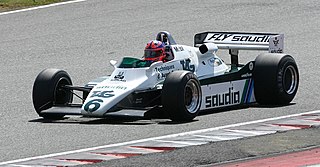
The Williams FW08 was a Formula One car designed by Frank Dernie, which debuted at the 1982 Belgian Grand Prix held at the Zolder circuit. An evolution of the FW07 that it replaced, the car was used by Finnish driver Keke Rosberg to win the 1982 World Drivers' Championship.
Walter Wolf Racing was a Formula One constructor active from 1977 to 1979, which won the first race the team entered. It was owned and run by Canadian Walter Wolf. The team was based in Reading, UK but raced with the Canadian licence.

There have been 32 Formula One drivers who have represented Brazil, including three world champions. Ayrton Senna, the three-time title winner, is regarded by many as the best driver in the history of Formula One. Nelson Piquet also won the title three times and Emerson Fittipaldi was a two-time winner. Rubens Barrichello, who used to hold the record for the most races contested with 322 starts, finished as the championship runner-up in two seasons. Following the retirement of Felipe Massa after the 2017 season, in 2018 there were no Brazilian drivers entered for the World Championship, the first time this had occurred since 1969.

The Fittipaldi FD was a series of Formula One chassis designed by Richard Divila and used by Fittipaldi Automotive in the 1975, 1976 and 1977 seasons. The initial chassis was designated Fittipaldi FD01 and there were three minor developments designated, Fittipaldi FD02, Fittipaldi FD03 and Fittipaldi FD04 respectively. FD series cars competed in 37 races making 43 individual entries in total. The chassis achieved a best finish of fourth place at both the 1977 Argentine and Brazilian Grands Prix driven on each occasion by former World Champion and joint team-owner Emerson Fittipaldi. It scored a total of 11 World Championship points.



